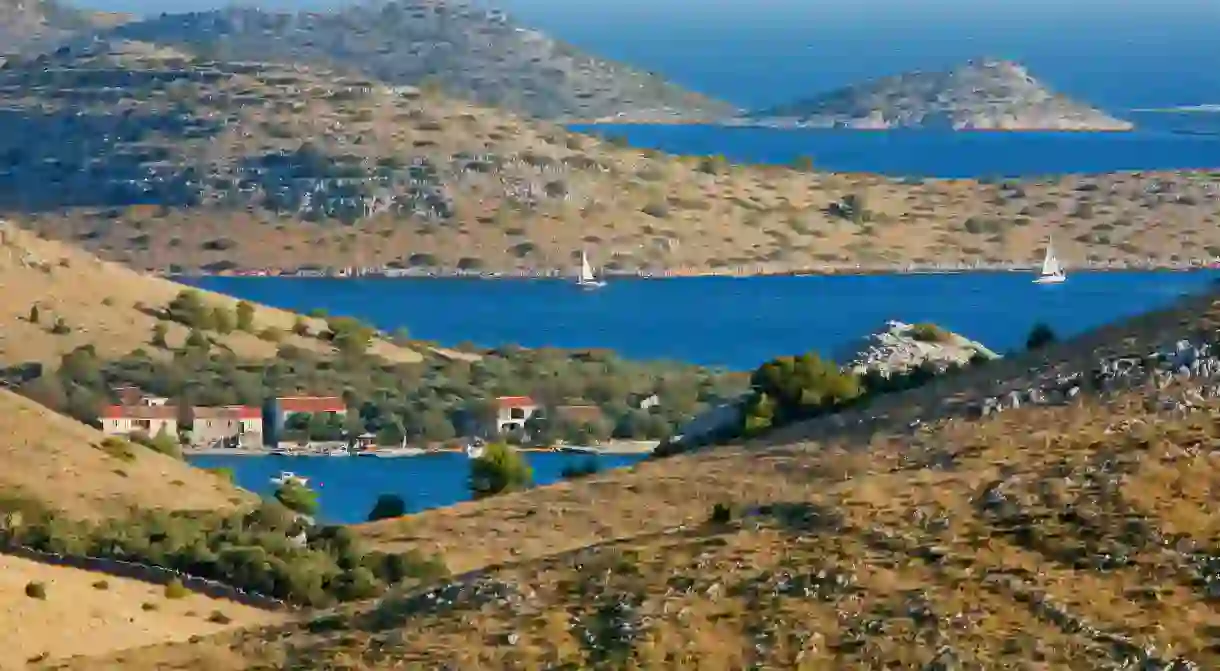A Guide to Sailing in the Kornati Islands, Croatia

The Kornati Islands in Croatia are god’s gift to yachties. Around 150 barely inhabited islands are scattered across 300sqkm (116sqmi) of sea. But here’s the best bit: since 1980, the entire archipelago has been protected within a national park. Dolphins leap, crabs crawl and 89 types of butterfly flutter. One essential reminder: the Kornati Islands have no cars, no hotels, no shops and no ferries. If you want to come and stay, then renting a chartered yacht is the way to go.
Discover the beauty of the islands’ hidden treasures with the unique Culture Trip’s Sailing Trips.
What to see and do
The Kornati Islands’ ethos is simple. You can swim, sail and snorkel anywhere you like within the unique national park, as long as you anchor carefully, don’t disturb any nature and enter via two watery gateways. When hiking on a deserted island, stick to the marked trails. Snorkelling around the main island of Kornat is a Finding Nemo vision. Just as cliffs rise to 200m (656ft), they descend into clear blue ocean to create wall dives with 30m (98ft) visibility.
On the same island you can climb to the abandoned fortress of Tureta, before making an inter-island swim across to Levrnaka island. The latter has a cracking seafood restaurant, Konoba Levrnaka, which can host 20 yachts moored to its two floating pontoons. For scuba dives over shipwrecks carpeted with gorgonia sea fans, a local diving outfit – such as the Kornati Diving Centre – will arrange day dive permits for you. Aside from that, the Kornati Islands are all about sunrise swims, lunchtime snoozes, sunset bird-watching and blowout meals in lonely coves. Then hit repeat at a new island tomorrow.

Best mooring locations
There are less expensive moorings than the 177 berths at D-Marin Borik in Zadar (VHF 17). But few are as cool. D-Marin – which operates marinas across Greece, Turkey and Dubai – offers a classy wine bar with a swimming pool, right next to two golden beaches. Sailing is allowed across the entirety of the Kornati Islands National Park aside from four specified islets. Through 2020 and 2021, over 50 extra buoys – for boats up to 16m (52ft) – were added to the 16 locations where boats can stay the night. Among the most tranquil are the mooring buoys in the protected bay of Uvala Tomasovac.

Where to eat and drink
Most seaside restaurants in the Kornati Islands have a line of private buoys or a rudimentary dock out front. In exchange for your patronage, you can tie up for free. Because these isolated islands are barely inhabited, cuisine is necessarily local – and can be pricey. Lobster and amberjack are sourced from sustainable fishers, while olive oils are often pressed from centuries-old trees.
On the island of Smokvica Vela, Konoba Smokvica serves up a rare Kornati fine-dining experience. Think sea bass tartare, seafood nigiri and tuna tataki. On the main island of Kornat, Darko Strižnja restaurant has its own mooring buoys. Try wondrous helpings of fish brodo (broth), sautéed chard, fresh oysters and island figs.

Where to get groceries
In Zadar, the Borik Marina branch of Konzum stocks fresh bread, green salads, local Karlovačka beer and plenty of lemons for your gin and tonics. For longer expeditions, hit Tommy Hypermarket on the edge of the city. There’s a delicatessen, cheese expert and enough Croatian wines to make up for the fact that there are zero – and we mean zero – stores in the Kornati Islands.
Key annual sailing events
Every April, around 100 sailboats set out from the mainland port of Murter for the Kornati Cup. Previous editions have circled the Kornati islands of Piskera – which hosts the Kornati’s only real marina – and Žut, the lonely yet second-largest island in the archipelago, before tacking back to Murter. The five-day regatta also allows novice sailors to pay for passage on larger yachts.

Climate and weather
One word: lovely. From mid-May through September, the Kornati Islands experience regular breezes from 5 to 15 knots, dying down overnight. As there are nearly 150 islands here in the Mediterranean’s densest archipelago, shelter can always be found. The dreaded bora gusts from the north usually only blow in winter. It’s certainly sunny. The Kornati Islands have an olive-growing climate, where occasional summer showers are followed by highs of up to 24C (75F) in May and September, and 30C (86F) from June to August. Tides aren’t something to fear, but do pay attention to wind whistling through island gaps.

How to get there
There are two options. From Zadar Airport, you can hop in a yacht, sail under the Ždrelac Bridge between the islands of Ugljan and Pašman, then turn south for the Kornati Islands. Further south, Split Airport has far more flights. From here, connect by car or bus to the charter-yacht ports of Šibenik, Tribunj, Murter and Biograd na Moru. Each harbour has scores of boats for rent.
Did you know – Culture Trip now does bookable, small-group trips? Pick from authentic, immersive Epic Trips, compact and action-packed Mini Trips and sparkling, expansive Sailing Trips.













